
Unless you’re one of those coffee drinkers have only black coffee, you’re probably in the habit of adding some sort of creamer, milk, or non dairy milk alternative into your morning coffee each day.
On its own, coffee can be too strong for many people, but by just adding a little bit of milk or milk substitute transforms it into a delicious, palatable treat!
What milk or milk alternative is best for coffee? Whole milk Coffee has a rich and full taste while plant based milks may be healthier for you. However you need to read the labels on any dairy or non dairy product as sometimes they are not as healthy as they appear.
There is not a best milk or non dairy milk substitute for everyone as they all have the their pluses and minuses and everyone has there preference. Here are some of the most common types of milks and non dairy milk alternatives used in coffee, their pros and cons, and their overall flavor profiles.
Keep reading to find out which type of milk or milk alternative just might become your favorite part of your morning coffee routine!
Whole Milk

Most people believe that whole milk is full of fat, but the truth is, whole milk is only about 3% milkfat by weight. A full glass of whole milk has about 150 calories, 8 grams of protein, and 8 grams of fat.
That being said, the amount of milk that typically gets added into a cup of coffee is nowhere near a full glass. If you’re scared to start drinking whole milk because you’ve heard horror stories about obesity and heart disease, don’t worry.
There is no association between milk fat and obesity or cardiovascular disease, and drinking whole milk has actually recently been linked to a lower BMI!
Whole milk tastes richer, creamier, and “milkier” than lower-fat types of milk, making it a great way to enrich the flavor of your coffee. It’s also richer in naturally-occurring vitamins like A, D, E, and K, due to its higher fat content.
If you’re looking for a delicious, creamy addition to your coffee, or if you are making a latte or cappuccino then whole milk is definitely the way to go.
However, if you’re especially conscious of your daily fat or caloric intake, or if you’re lactose intolerant, whole milk probably isn’t be the best option for you.
Reduced Fat Milk
2% milk, also known as reduced fat milk, is made by skimming the cream out of large batches out of milk during the production process, and then adding a little back in until the milk fat makes up 2% of the total weight of the milk.
This sounds sort of complicated, but basically, 2% milk is defined by the fact that milkfat makes up 2% of its weight. The end result is a glass of milk with about 120 calories, 8 grams of protein, and 5 grams of fat. 2% milk tastes fairly similar to whole milk, since its milkfat content is only about 1% less.
This sounds sort of complicated, but basically, 2% milk is defined by the fact that milk fat makes up 2% of its weight. The end result is a glass of milk with about 120 calories, 8 grams of protein, and 5 grams of fat. 2% milk tastes fairly similar to whole milk, since its milk fat content is only about 1% less.
However, it has about 30 fewer calories per glass, 3 fewer grams of fat per glass, and the same amount of protein per glass as its full-fat counterpart, which makes it an excellent option for people who like the taste of whole milk, but are looking for places to cut calories.
It’s a great middle ground between whole milk and fat free milk, combining the lower calorie and fat content associated with skim milk and the delicious taste associated with whole milk. Plus, it’s the most commonly purchased variety of milk!
Fat Free Milk
As its name suggests, fat free milk, also known as skim milk, has had all of the milk fat skimmed out during the production process, leaving behind an end result fully devoid of cream. A glass of skim milk has about 80 calories, 8 grams of protein, and 0 grams of fat.
This makes it a good option for people who want to avoid a high caloric content in their morning coffee, but it also has an impact on the milk’s taste. Because it has no fat at all, it doesn’t have the distinctively creamy, rich taste associated with milk, and instead tastes quite watery and thin.
In fact, many people actively dislike skim milk because of its distinctive taste. Additionally, many of the nutrients present in unprocessed milk reside in the cream.
When that cream gets removed to make skim milk, many milk producers compensate by artificially adding in vitamins like A and D. If you’re just looking for a way to dilute the taste of black coffee without adding any calories, fat free milk might be the way to go.
However, if you really value the rich, creamy, dairy taste that a splash of milk can impart into your coffee, you’re better off sticking with 2% or whole milk.
Soy Milk
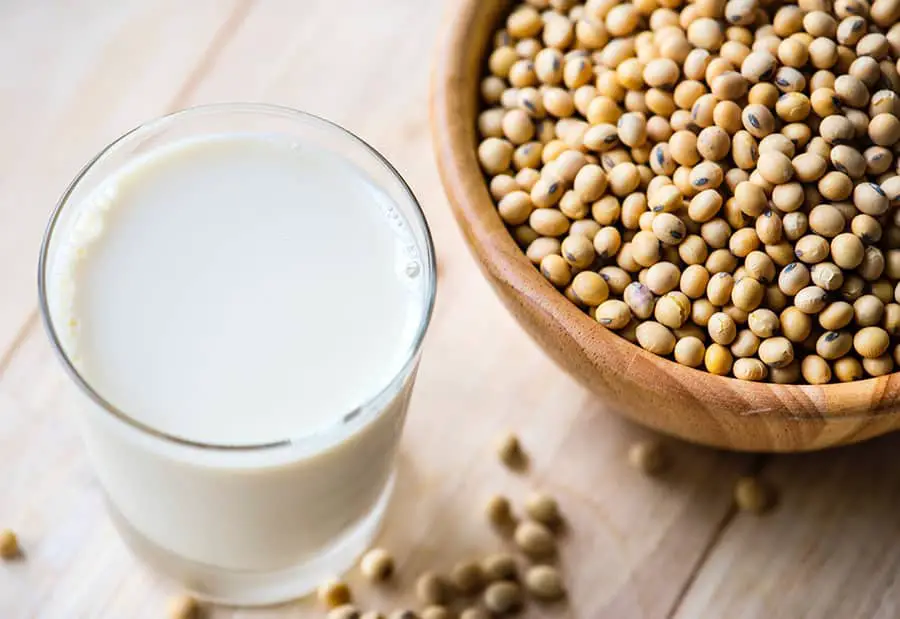
Soy milk is one of the most popular and common milk alternatives out there. It’s made by soaking and boiling soybeans in water, which creates a creamy liquid that looks and tastes quite similar to regular cow’s milk.
Many of the soy milks commercially available at grocery stores and coffee shops have sweetener added to get rid of any residual savory or soy-like flavor, but plain, unsweetened soy milk is also readily available. You can also buy flavored soy milk, with vanilla, chocolate, and strawberry being the most popular and widely-available options.
One glass of unsweetened soy milk has about 92 calories, 7.5 grams of protein, and 4 grams of fat, making it a relatively low-calorie alternative to whole milk or 2% milk without losing very much of cow milk’s intrinsic nutritional value.
Additionally, the naturally-occurring protein in soy milk is much better for you than most other vegetable proteins, since it contains all of the amino acids your body needs to function.
Finally, soy milk is naturally rich in potassium, an electrolyte that helps regulate your blood pressure, nervous system, and muscle contractions, making it a great dairy substitute for athletes.
If you’re lactose intolerant, vegan, or just don’t like the taste of cow’s milk, soy milk is a great, easily accessible option for you!
Almond Milk in Coffee
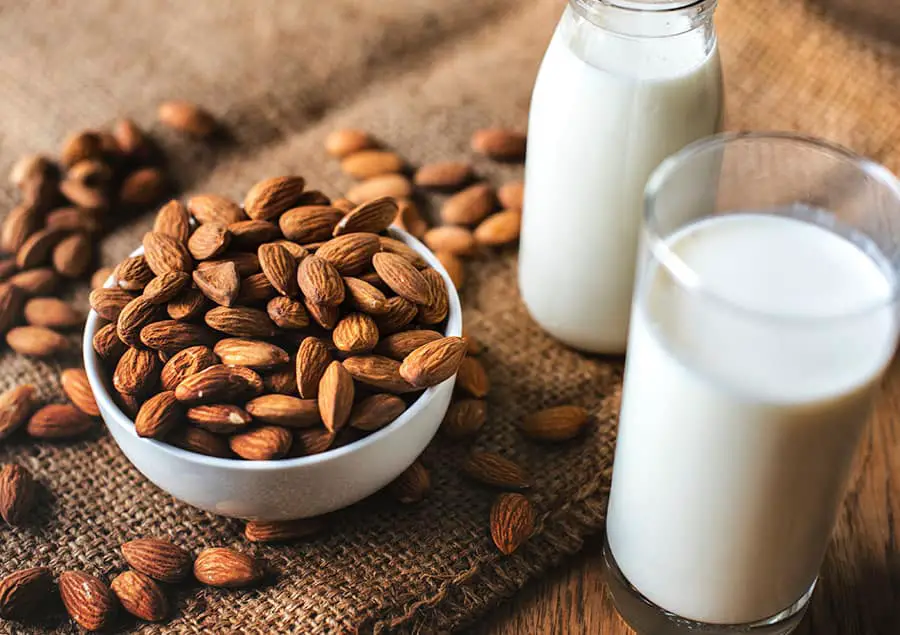
Over the past couple of years, almond milk has experienced a meteoric rise in popularity, even overtaking soy milk as the most-consumed variety of plant milk in the United States as of 2013.
It’s made by grinding up almonds with water, then straining the pulp out to reveal a slightly sweet, creamy liquid with a faint nutty flavor whose texture is very similar to real cow’s milk. (You can try this out at home using your blender, if you’re curious!)
A cup of unsweetened almond milk has about 40 calories, 2 grams of protein, and 3 grams of fat. It’s also very high in vitamin E, which is great for your skin and immune system.
In addition to unsweetened almond milk, you can also buy sweetened versions, as well as flavors like vanilla and chocolate.
It’s lower in calories and fat than soy milk, which makes it a more diet-friendly milk alternative, but it’s also significantly lower in protein, which might be a drawback depending on your lifestyle and nutritional needs.
Also, almond milk is especially popular among iced coffee enthusiasts. You can even buy bulk bottles of specialty iced coffee that already have almond milk mixed in. If you haven’t tried almond milk yet, I highly recommend it!
Coconut Milk in Coffee
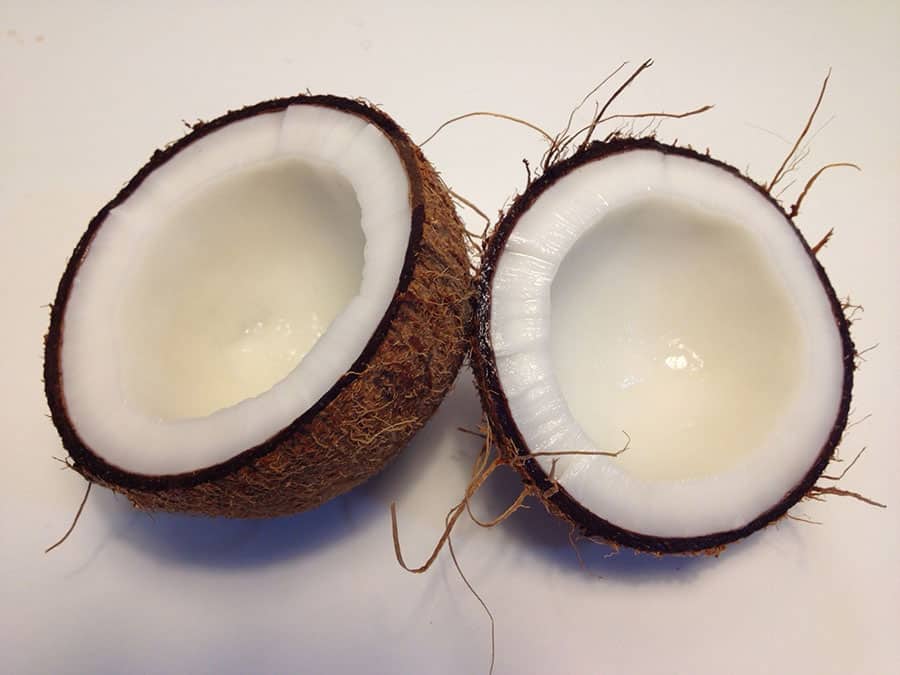
Coconut milk is combined by squeezing the liquid out of shredded coconut fruit and combining it with water. (Make sure you don’t get this kind of milk confused with canned coconut milk, also known as coconut cream, which is an entirely different type of food.)
It’s high in healthy saturated fats like lauric acid, which can help reduce inflammation, fight viruses and bacteria, and prevent infections.
Although saturated fats have gotten a bad rap in the past, more recent studies have suggested that in small amounts, they are good for you, as long as you’re consuming an overall healthy daily caloric intake that suits your body and lifestyle.
As a dairy substitute, a cup of coconut milk is quite high-calorie and high-fat, with a whopping 552 calories per cup, as well as 5 grams of protein and 57 grams of fat.
Obviously, you’re going to want to keep your daily coconut milk consumption quite low to avoid overloading on calories so early in the morning.
However, the taste of coconut milk is ideal for adding into your coffee. It’s smooth, sweet, slightly thick, and has a mild coconut flavor, which makes it an absolutely delicious addition to both hot and iced coffee.
Rice Milk in Coffee
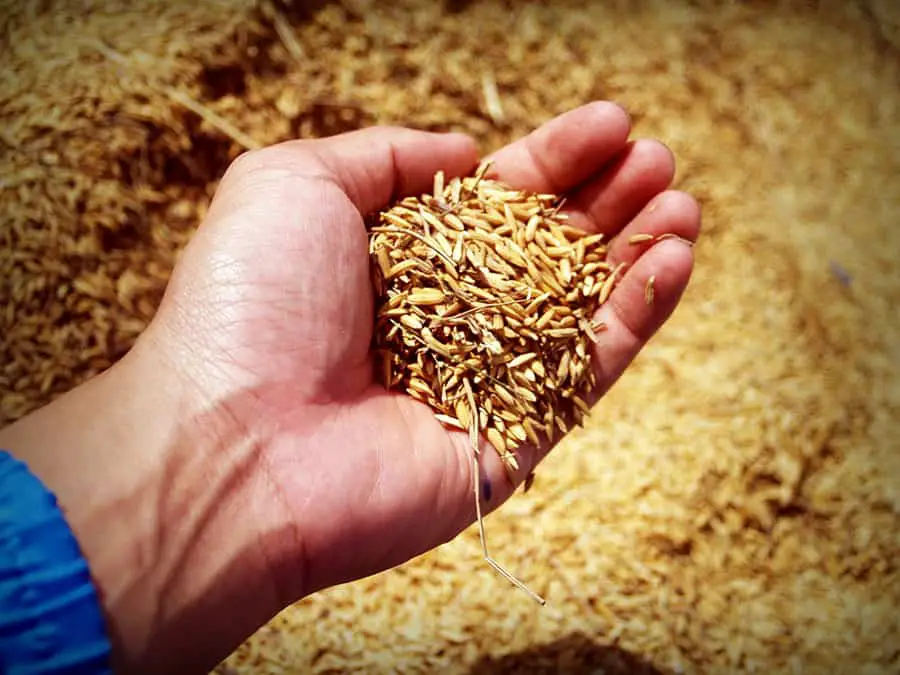
Rice milk is made using brown rice, which gets ground up and milled, then boiled with water to produce a sweet, cream-colored, milky liquid.
Rice milk is naturally a little bit sweet, but many brands do add additional sugar to their rice milk products. (If you’re looking for the healthiest rice milk option, make sure that the carton you buy boasts “no added sugars.”)
The average cup of rice milk has about 120 calories, but is very low in both fat and protein, which means that it has very little actual nutritional value. Many brands try to mediate this low nutritional value by adding vitamins like A, D, and B12, as well as calcium.
Because plain rice milk is quite runny, many companies also end up adding extra thickening agents to give it a creamier, milk-like consistency, which might be something to watch out for if you’re trying to avoid additives.
Rice milk is hypoallergenic, which means that it’s a good milk substitute for vegans and lactose intolerant people, but also for people who can’t drink soy milk or almond milk due to allergies.
Rice milk definitely isn’t the most nutritionally rich milk alternative, but if you do have allergies, it’s a great way to make your morning cup of joe taste much nicer without aggravating your food sensitivities!
Oat Milk in Coffee
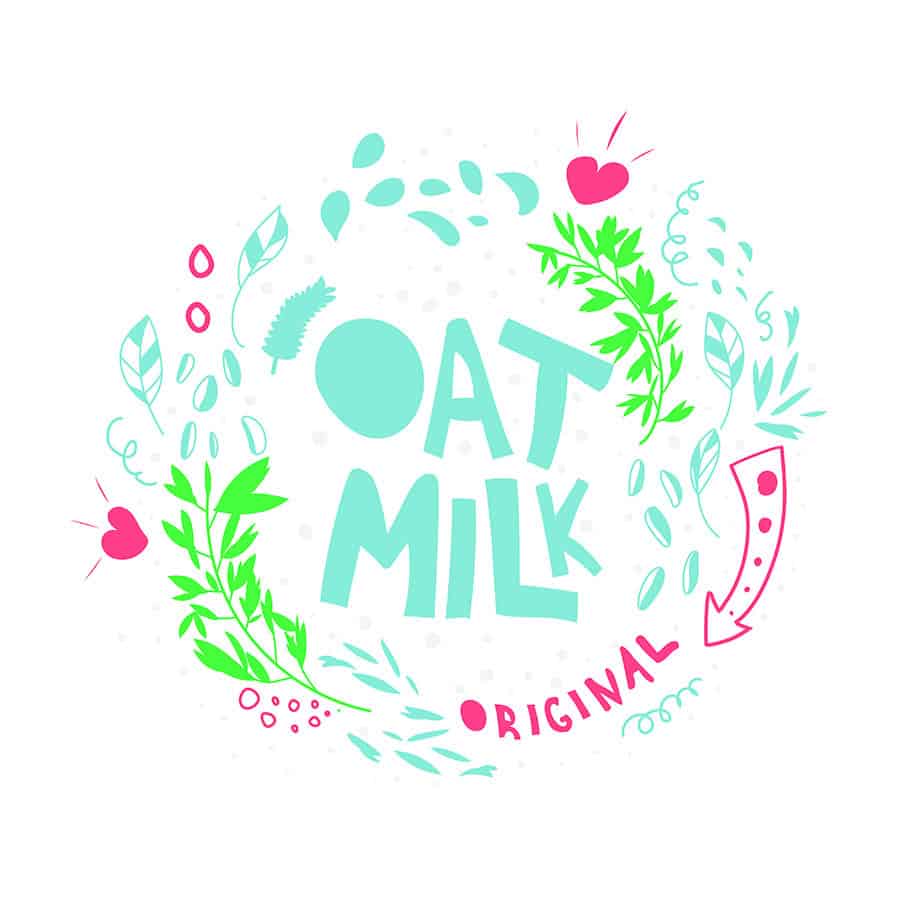
Oat milk is one of the newest milk alternative trends, widely believed to have been invented by the Swedish company Oatly. In fact, in late 2018, the oat milk craze has gotten so out of hand that some oat milk fanatics are willing to pay over $200 to get their Oatly fix.
The good news is that many blogs online have recipes for do-it-yourself oat milk that you can make at home, and thus avoid shelling out exorbitant sums on milk substitutes.
Oat milk is made by soaking steel-cut oats in water overnight, blending the mixture, and straining out the pulp to leave behind a thick, creamy, milk-like liquid.
Oat milk is great for people who are lactose intolerant or have a nut allergy. It can sometimes also be consumed by people with celiac disease or a gluten sensitivity, but if that applies to you, make sure you check your oat milk’s label for a gluten-free oat certification.
One cup of oat milk has 130 calories, 3 grams of fat, and 4 grams of protein. One of its biggest selling points is its relatively high fiber content, with 2 grams per serving, which is quite high for a beverage. Oat milk is also naturally high in calcium and vitamin D.
Its flavor is sweet and creamy with a slightly thick consistency, which makes it taste absolutely delicious in a cup of coffee. If you can get your hands on a (reasonably priced) carton of oat milk, or are interested in trying to make your own at home, we highly recommend it!
Final Thoughts
The world of milk and milk substitutes is ever-expanding, which can make choosing one at the coffee shop or grocery store an almost overwhelming task. Each variety has its own pros and cons, its own flavor profile, and its own unique production process.
There isn’t really such thing as a “number one best milk/milk substitute for everyone,” but hopefully, by reading this article, you’ve narrowed down a few new options that will work best for your tastes and lifestyle! What’s your favorite type of milk or non dairy milk substitute?

